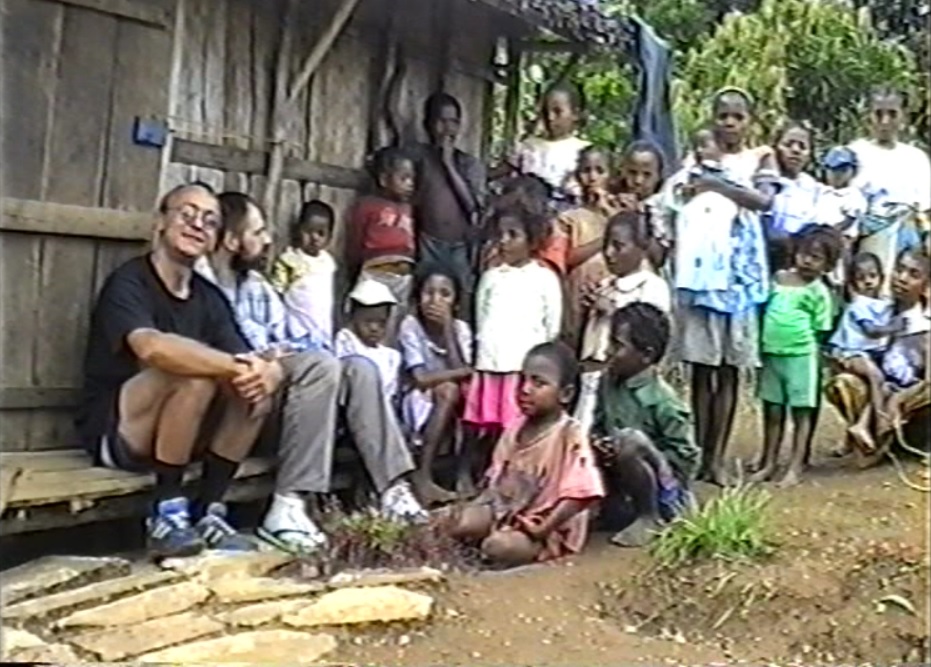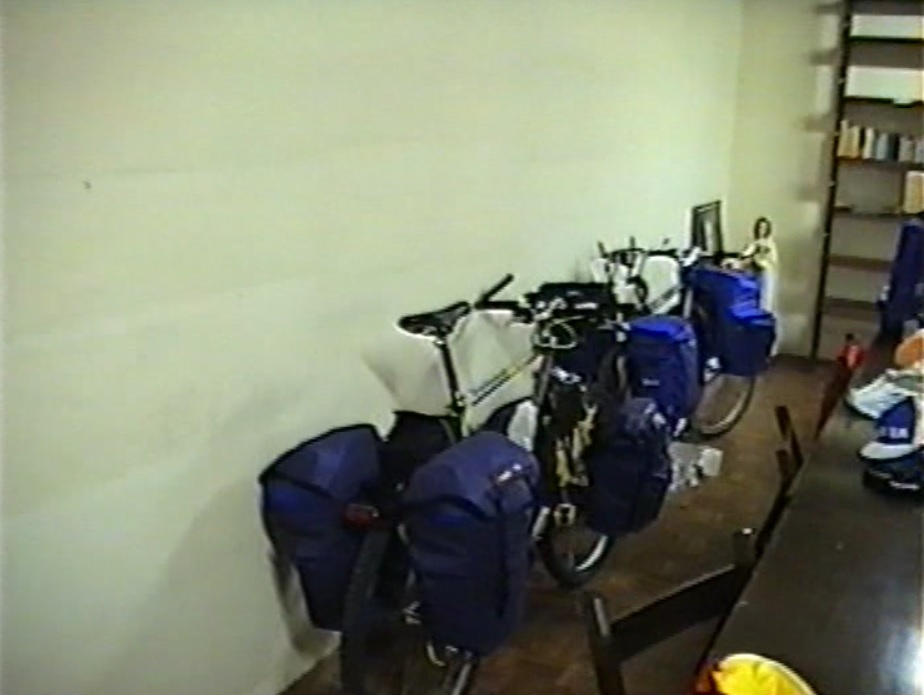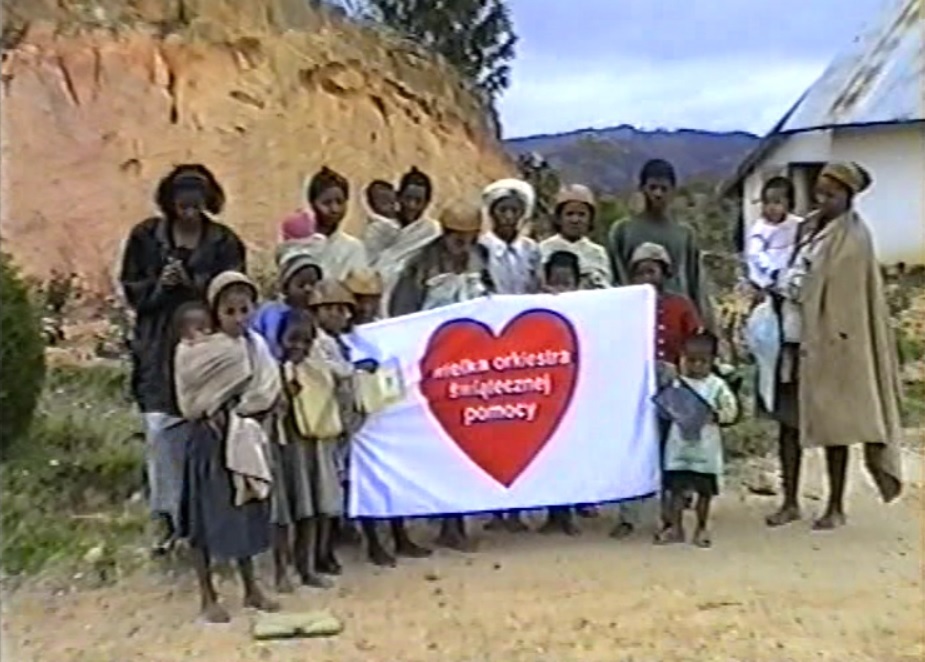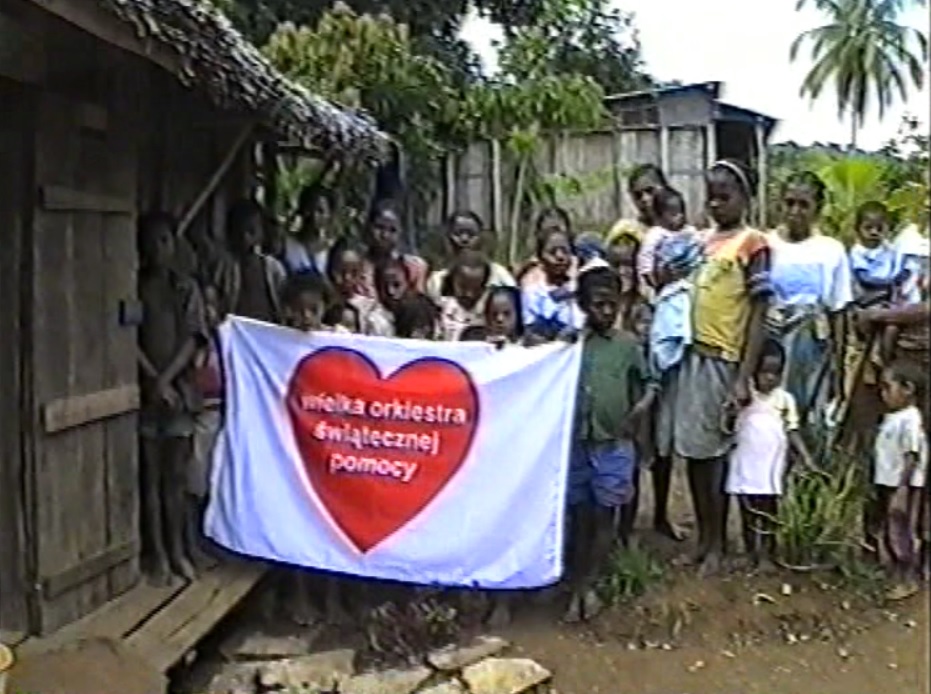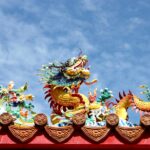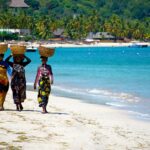For English version please scroll down.
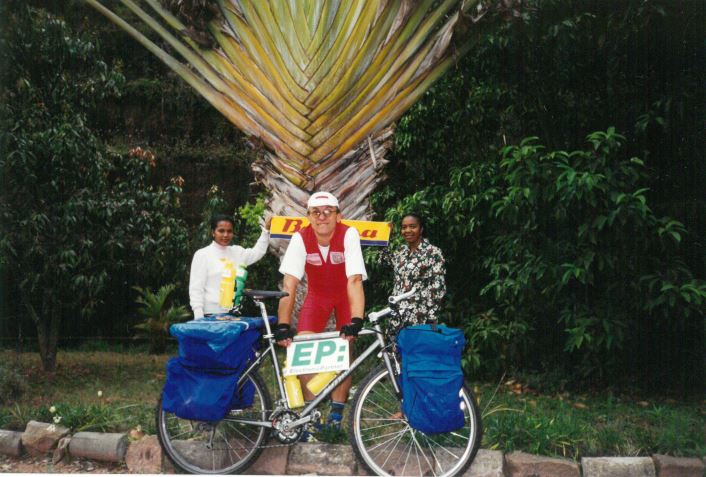
26 czerwca to dzień niepodległości Madagaskaru – kraju wyspiarskiego położonego na Oceanie Indyjskim u południowo-wschodnich wybrzeży Afryki. W 1996 roku ten niezwykły kraj postanowił objechać rowerem (jako pierwszy Polak!) Marek Dworski (66l.) – gliwiczanin; dobrze znany w środowisku biegowym; wielokrotny uczestnik maratonów i ultra maratonów, rozpoznawalny dzięki uśmiechowi i charakterystycznemu żółtemu strojowi; podróżnik. Marek zgodził się opowiedzieć o swojej niezwykłej wyprawie. Rozmawiamy o pobycie na Madagaskarze, kulturze i gościnności Malgaszy oraz o pomyśle objechania wyspy rowerem.
Skąd pomysł wyjazdu na Madagaskar?
Marek Dworski: Jak każdy młody chłopak zaczytywałem się w książkach podróżniczych i przygodowych. To powiązanie tych zainteresowań z Arkadym Fiedlerem, w mojej ocenie największym podróżnikiem obok Tony’ego Halika. Forma jego książek była tak fantastyczna, że czytało się je bez przerwy na jedzenie i spanie, tak długo aż się skończyło. Egzotyka zawarta w “Jutro na Madagaskar”, “Wyspa kochających lemurów”, “Madagaskar, okrutny czarodziej” czy “Gorąca wieś Ambinanitelo” były przenosinami w sferę marzeń. Jako nastolatek nie byłem w stanie tego zrealizować, ale mając trochę więcej lat myślałem już bardziej realnie o spełnieniu tego marzenia.
Czytałam, że do wyprawy przygotowywałeś się 6 miesięcy. Jakie to były przygotowania?
MD: Moje przygotowania to głównie trening fizyczny. Wiedziałem , że Madagaskar jest prawie dwa razy większy od Polski i głównie to płaskowyż. Co się na miejscu okazało z ogromnymi podjazdami i zjazdami. Poza tym nauka francuskiego, ale to w minimalnym stopniu, bo to trudny język. Jedyny poza malgaskim, w którym można z Malgaszami się dogadać. Zakup odżywek, minerałów, jedzenia w proszku – a były to czasy, kiedy nie było takiej dostępności jak teraz. Zbieranie od darczyńców różnych prezentów, w szczególności dla dzieci.
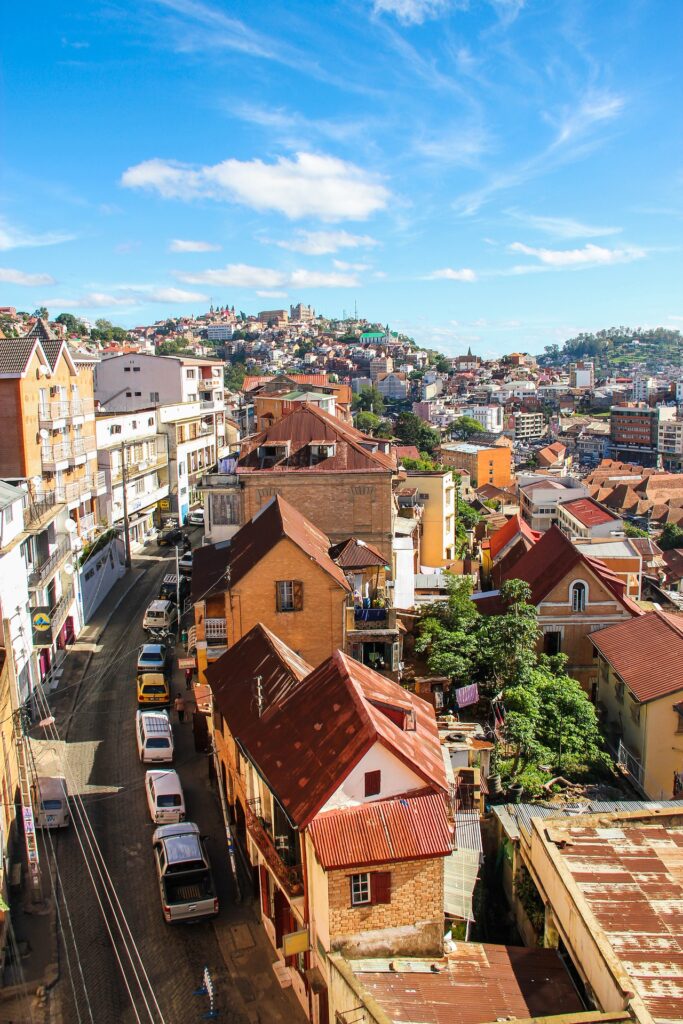
Wylądowałeś w stolicy Madagaskaru – Antananarywie (Antananarivo). Jakie pierwsze wrażenie zrobił na Tobie Madagaskar?
MD: Po wylądowaniu, a jeszcze przed opuszczeniem samolotu wrażenia nienajlepsze. Nie pozwolono nam wysiąść z samolotu i przeprowadzono szczegółową kontrolę. Potem dowiedziałem się jaka była przyczyna: sanitarna oraz względy bezpieczeństwa. Lotnisko jak na stolicę państwa ubogie i malutkie. Samo miasto przepiękne, położone jak Rzym na siedmiu wzgórzach bez żadnej zabudowy wysokościowej. Same niskie budynki i co najbardziej przerażające pozbawione kanalizacji, gdzie oczyszczanie szamb odbywało się w sposób naturalny przy udziale jakichś mikroorganizmów. I tak jak się mówi o Madagaskarze to faktycznie czerwona wyspa przez dominujący w różnych formach lateryt.
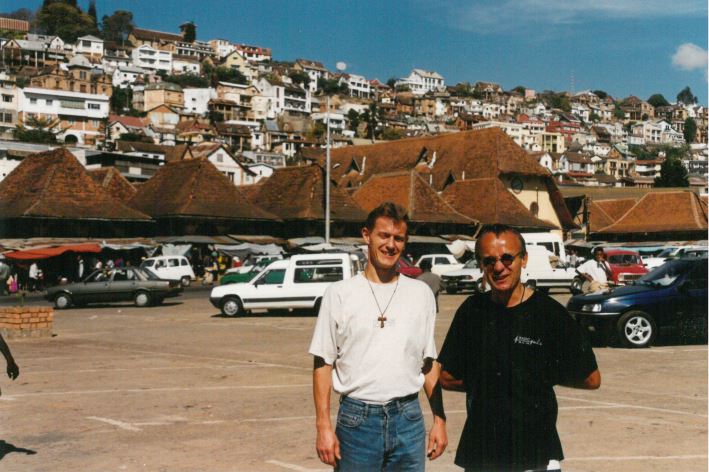
Na lotnisku powitał Cię polski misjonarz ojciec Roman z zakonu Oblatów. Opowiedz więcej o pracy misjonarzy na Madagaskarze, czym się zajmowali, w czym pomagali lokalnej ludności?
MD: Jest to temat ogromny. Spotkałem się z misjonarzami różnych zgromadzeń. Wymienić muszę przede wszystkim Oblatów, Kamilianów, Franciszkanów, Jezuitów oraz Kapucynów. Tylko z tymi ostatnimi nie miałem kontaktu. Wszyscy prowadzili ewangelizację, ale szczególne wrażenie wywarli na mnie Kamilianie, którzy prowadzili szpitale oraz leprozoria dla chorych na trąd. Dyrektor szpitala w Fianarantsoa, największego tego typu szpitala na Madagaskarze, o. Szymon był u mnie pół roku później z wizytą i na tradycyjnym śląskim obiedzie. Jezuici polscy byli pierwszymi, którzy założyli szpitale dla chorych na trąd (o. Beyzym). Misjonarze nie zajmowali się tylko ewangelizacją. Ich wszechstronna pomoc żywieniowa, edukacyjna, zdrowotna jest nie do przecenienia. To wspaniali ludzie, którzy pomagali ludziom nie oczekując nic w zamian.
Na wielu ujęciach z filmów widać także logo Wielkiej Orkiestry Świątecznej Pomocy. Opowiedz więcej o tym skąd WOŚP wziął się na Madagaskarze?
MD: O swojej wyprawie poinformowałem Jurka Owsiaka, który bardzo mnie wspierał medialnie i dostałem bardzo dużo różnych gadżetów WOŚPu, które rozdałem dzieciom na Madagaskarze. Pamiętam fragment z nagranego przeze mnie filmu przy szkole w totalnym buszu, na którym dzieci malgaskie śpiewają hymn dla dzieci polskich (zdjęcie z transparentem przyp. red.). Nie potrafiłem dokładnie im tego wytłumaczyć; jedynie tyle, że transparent, który trzymają jest symbolem polskich dzieci.

Wyprawa Marka rozpoczęła się od stolicy kraju Antananarivo skąd wyruszył rowerem na południe kraju. Celem było miasto Antsirabe (odległość 185 km), do którego droga prowadziła przez wzniesienia i trudne podjazdy. W pokonywaniu trasy nie pomagał fakt umieszczenia na drodze patroli policyjnych, które co krok monitorowały drogę. Kolejnym etapem podróży było miasto Fianarantsoa, gdzie Marek zatrzymał się u Kamilianów. Zanim jednak udało się dotrzeć do miasta, nie obyło się bez niebezpieczeństw… Ciąg dalszy w części drugiej już wkrótce. Jeśli spodobał się Wam ten tekst zostawcie ślad w postaci komentarza 🙂
ENGLISH VERSION: He was the first Pole to cycle around Madagascar! Interview with Marek Dworski, part I

June 26 is the Independence Day of Madagascar – an island country located in the Indian Ocean off the south-eastern coast of Africa. In 1996 Marek Dworski from Gliwice (Silesia) decided to tour Madagascar by bike (as the first Pole!). Marek (66 yo) is well-known in the running environment. He participated in multiple marathons and ultra-marathons. Recognizable by his smile and characteristic yellow outfit; also a traveler. Marek agreed to talk about his extraordinary journey. We are talking about his stay in Madagascar, Malagasy culture and hospitality, and the idea of cycling around the island.
Where did the idea of a trip to Madagascar come from?
Marek Dworski: Like every young boy, I read travel and adventure books. It is the connection of these interests with Arkady Fiedler, in my opinion, the greatest traveler next to Tony Halik. The form of his books was so fantastic that you would read them all the time without breaks until they were finished. The exotic features of Tomorrow to Madagascar, The Island of Loving Lemurs, Madagascar, the Cruel Wizard, and The Hot Village of Ambinanitelo was transferred into the dream. I could not realize my plans as a teenager. As an older man, I started thinking more realistic about making this dream come true.
I read that you have been preparing for the trip for 6 months. What were these preparations?
MD: My preparation was mainly physical training. I knew that Madagascar is almost twice the size of Poland and is a plateau. What turned out to be with huge climbs and descents. Besides, learning French, but only the basics as I found it difficult. It was the only language, apart from Malagasy, which helps you get along with people in Madagascar. I also prepared nutrients, minerals, powdered food – and those were the times when there was no such availability as now. I collected various gifts from donors, especially for Malagas children.
You have landed in the capital of Madagascar – Antananarivo. What was your first impression of Madagascar?
MD: After landing, and even before leaving the plane, the impression was not very good. We were not allowed to get off the plane and went through customs control. Then I found out why: sanitary and safety reasons. The airport was poor and tiny for the capital of a country. The city itself was beautiful, located like Rome on seven hills without any high-rise buildings. Only low-rise buildings and, most frighteningly, without a sewage system, where the cleaning of septic tanks took place naturally with the participation of some microorganisms. And as it is said about Madagascar, it is actually a red island because of the dominance in various forms of laterite.
At the airport, you were greeted by a Polish missionary, Father Roman of the Oblate Order. Tell me more about the missionaries’ work in Madagascar. How did they help the local people?
MD: It is an enormous topic. I met with missionaries from various congregations. I must mention, first of all, the Oblates, the Camillians, the Franciscans, the Jesuits, and the Capuchins (I had no contact with the latter). They all led evangelization, but the Camillians impressed me the most. They ran hospitals for people with leprosy. The head of the hospital in Fianarantsoa (the largest hospital of this type in Madagascar) Fr. Szymon visited me six months later for a traditional Silesian dinner. Polish Jesuits were the first to set up hospitals for leprosy patients (Fr. Beyzym). Missionaries weren’t just about evangelism. Their comprehensive nutritional, educational, and health assistance cannot be overestimated. People who didn’t expect anything in return.
The logo of Wielka Orkiestra Świątecznej Pomocy (Grand Orchestra of Christmas Charity in Poland editor’s note) is also visible in your photos. Tell me more about how WOŚP appeared in Madagascar?
MD: I informed Jurek Owsiak (CEO of Grand Orchestra of Christmas Charity in Poland editor’s note) about my trip, who supported me a lot in the media. I received a lot of various WOŚP gadgets, which I distributed to children in Madagascar. I remember a fragment of a film I recorded at school in a bush, where Malagasy children sing a national anthem for Polish children (photo with a banner, editor’s note). I couldn’t really explain it to them. I just mentioned that the banner they are holding is a symbol of Polish children.
Marek’s expedition began in the capital city, Antananarivo, from where he set off by bicycle to the south of the country. The destination was Antsirabe (185 km), to which the road led through hills and ascents. The police patrols who monitored the road did not help in the expedition. The next stage of the journey was the city of Fianarantsoa, where Marek stayed with the Kamilian missionaries. However, before he managed to reach the town, he experienced some unexpected dangers … To be continued in part two soon. If you like this article please comment and share it 🙂 Text translated from original Polish language by me. Thank you for commenting and sharing!
